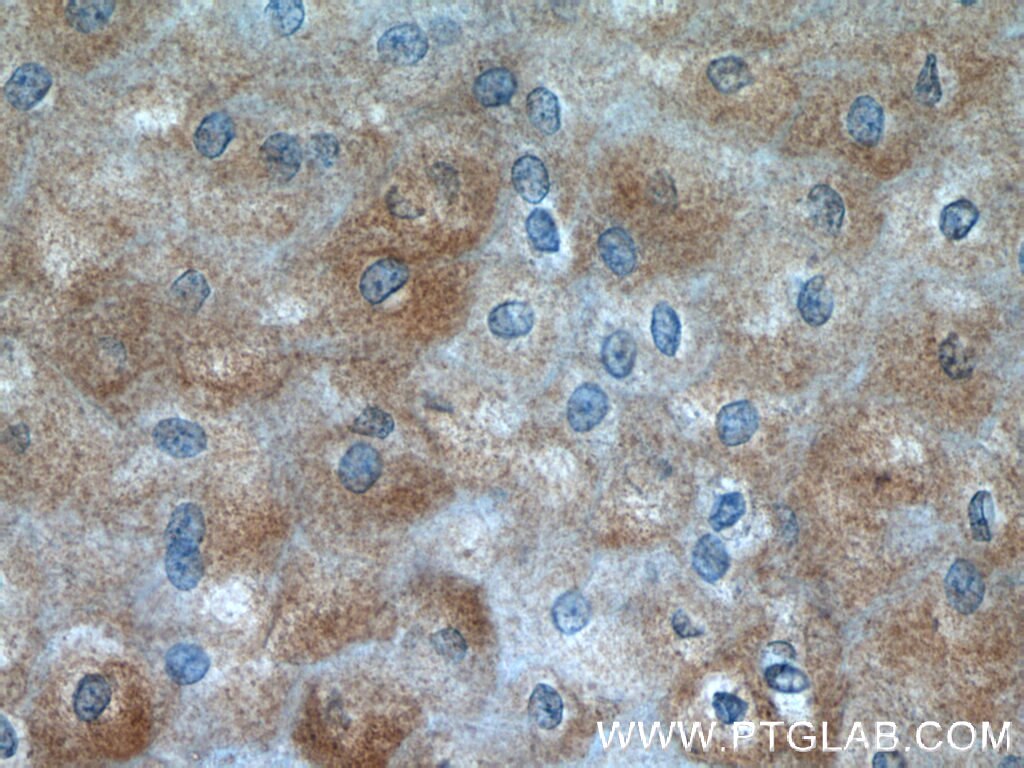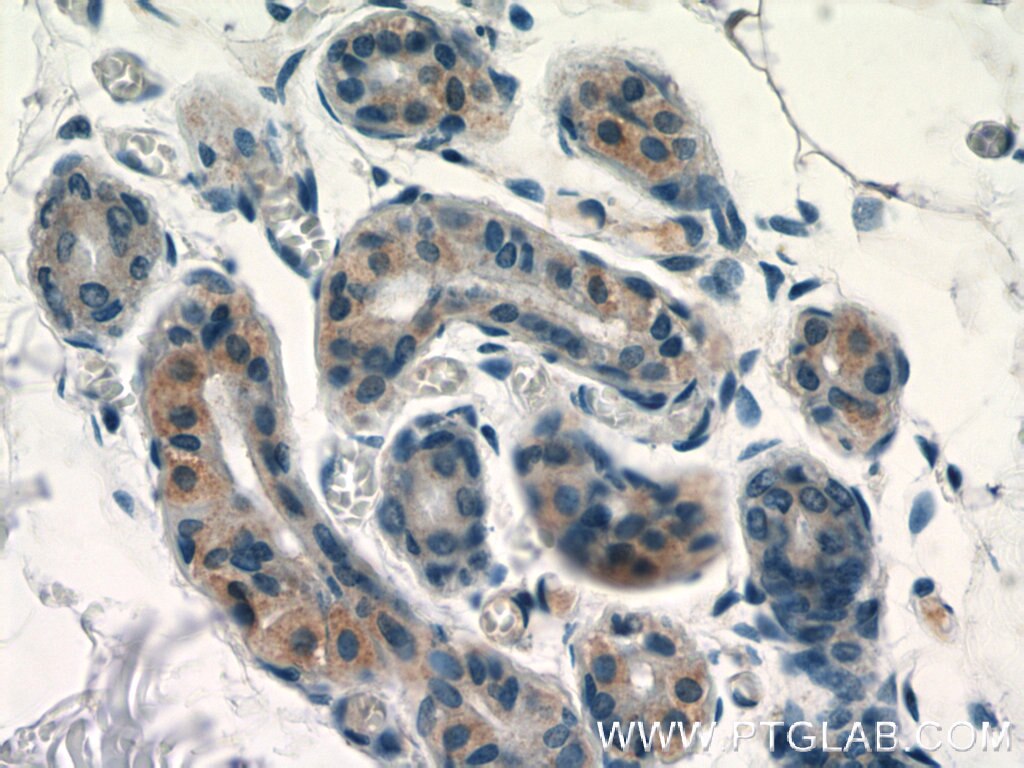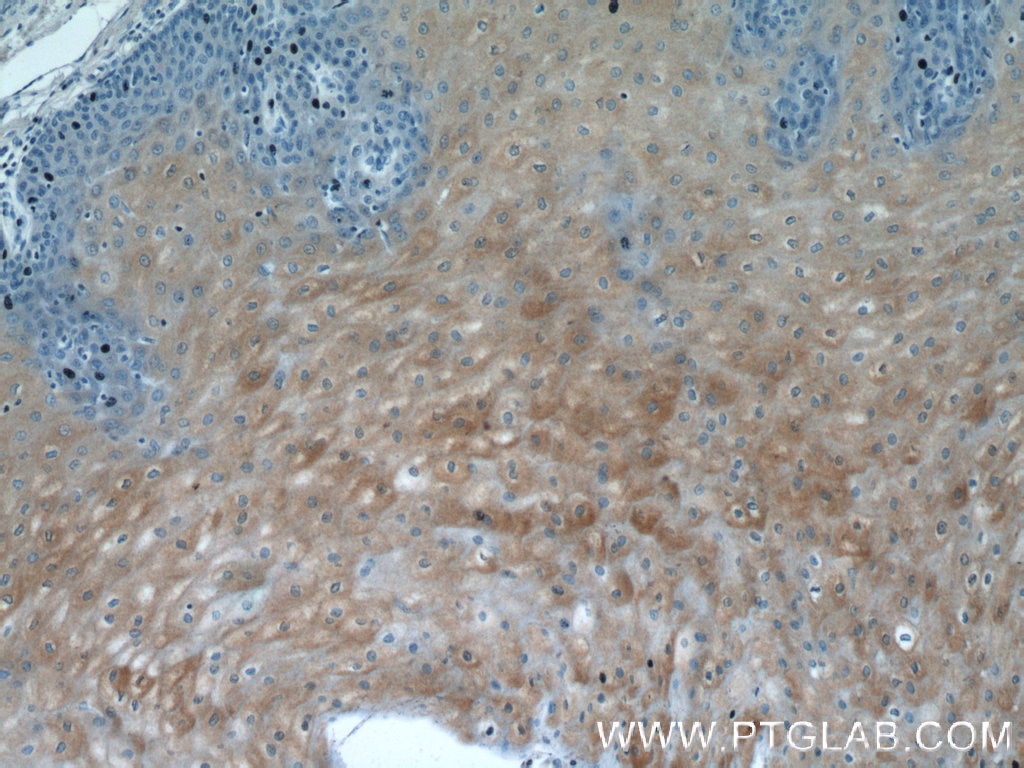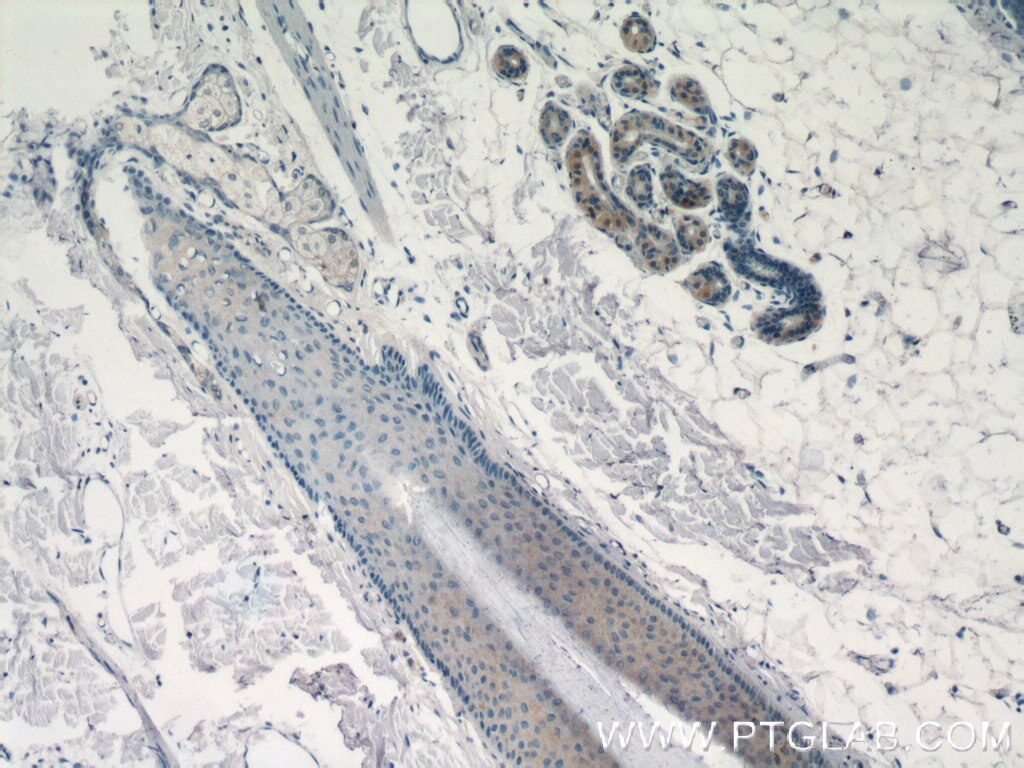Anticorps Polyclonal de lapin anti-SPRR2D
SPRR2D Polyclonal Antibody for IHC, ELISA
Hôte / Isotype
Lapin / IgG
Réactivité testée
Humain et plus (1)
Applications
IF, IHC, ELISA
Conjugaison
Non conjugué
N° de cat : 23046-1-AP
Synonymes
Galerie de données de validation
Applications testées
| Résultats positifs en IHC | tissu œsophagien humain, tissu cutané humain il est suggéré de démasquer l'antigène avec un tampon de TE buffer pH 9.0; (*) À défaut, 'le démasquage de l'antigène peut être 'effectué avec un tampon citrate pH 6,0. |
Dilution recommandée
| Application | Dilution |
|---|---|
| Immunohistochimie (IHC) | IHC : 1:20-1:200 |
| It is recommended that this reagent should be titrated in each testing system to obtain optimal results. | |
| Sample-dependent, check data in validation data gallery | |
Applications publiées
| IHC | See 2 publications below |
| IF | See 2 publications below |
Informations sur le produit
23046-1-AP cible SPRR2D dans les applications de IF, IHC, ELISA et montre une réactivité avec des échantillons Humain
| Réactivité | Humain |
| Réactivité citée | souris |
| Hôte / Isotype | Lapin / IgG |
| Clonalité | Polyclonal |
| Type | Anticorps |
| Immunogène | SPRR2D Protéine recombinante Ag19079 |
| Nom complet | small proline-rich protein 2D |
| Masse moléculaire calculée | 72 aa, 8 kDa |
| Numéro d’acquisition GenBank | BC120938 |
| Symbole du gène | SPRR2D |
| Identification du gène (NCBI) | 6703 |
| Conjugaison | Non conjugué |
| Forme | Liquide |
| Méthode de purification | Purifié par affinité contre l'antigène |
| Tampon de stockage | PBS avec azoture de sodium à 0,02 % et glycérol à 50 % pH 7,3 |
| Conditions de stockage | Stocker à -20°C. Stable pendant un an après l'expédition. L'aliquotage n'est pas nécessaire pour le stockage à -20oC Les 20ul contiennent 0,1% de BSA. |
Protocole
| Product Specific Protocols | |
|---|---|
| IHC protocol for SPRR2D antibody 23046-1-AP | Download protocol |
| Standard Protocols | |
|---|---|
| Click here to view our Standard Protocols |
Publications
| Species | Application | Title |
|---|---|---|
Theranostics Cdc42 Deficiency Leads To Epidermal Barrier Dysfunction by Regulating Intercellular Junctions and Keratinization of Epidermal Cells during Mouse Skin Development. | ||
Ecotoxicol Environ Saf Antiestrogenic property of 9,9-bis[4-(2-hydroxyethoxy)phenyl]fluorene (BPEF) and its effects on female development in CD-1 mice | ||
Ecotoxicol Environ Saf 4,4'-(9-Fluorenylidene)dianiline (BAFL) is antiestrogenic and has adverse effects on female development in CD-1 mice | ||





